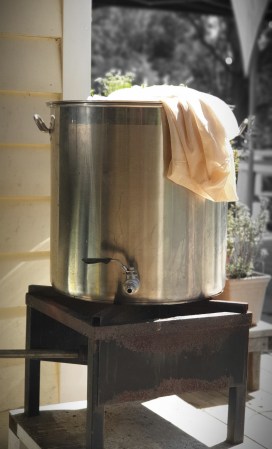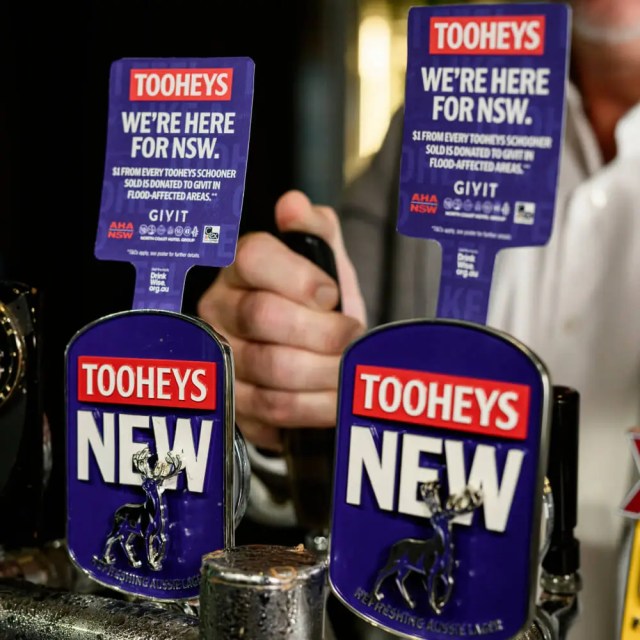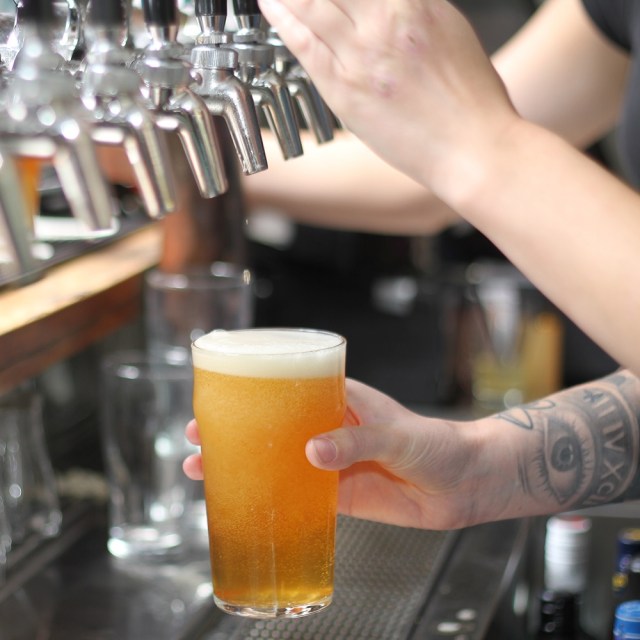
It’s day four of Homebrew Week and today, we’re bringing you an interview with homebrewer extraordinaire Helen Hewson.
Helen Hewson works part time at Grain and Grape Homebrew store, is a beer lover, beer judge, and a lazy homebrewer based in Melbourne Australia.
Her brewing equipment consists of a pot and a bag. She refuses to spend any money on upgrading this equipment until she can afford a Braumeister. She has reconciled herself to brewing with a pot and bag for the foreseeable future.
Beer & Brewer had a chat with her about homebrewing.
Q: What advice would you give to someone looking to get into homebrewing?
There is so much information available about homebrewing – from books and magazines to on-line forums and Youtube videos. This can be overwhelming for the person starting out with so many variables to consider – extract or all grain, equipment, ingredients, recipes, cleaning, temperature control, sanitising, packaging, processes, etc. Brewing beer is complex, but doesn’t need to be over complicated.
Talk to the staff at a homebrew shop. They are a great starting point for the novice brewer to have their questions answered, and they may even hold homebrew demonstrations which is a great opportunity to see different brewing equipment and techniques in action.
Is there a homebrew club or homebrew appreciation group in your area, or do you have friends who homebrew? Before you invest in any equipment, hang out with people who are brewing and get some hands on experience. Everyone is a beginner at some point, and learning from people you can talk to, watching what they do, and questioning why they do it is invaluable.
Q: What are the most common mistakes that people can avoid? What steps can people take to improve their homebrewing?
Good Record Keeping: Keep records of your recipes, what you did on your brew days and what has occurred during fermentation. However you wish to track what you’re doing, track it. Whatever works for you – notebook, excel spreadsheet or homebrewing software. Good records can assist in recreating that phenomenal beer or working out what went wrong in that NQR beer.
Dial in Equipment: Everyone’s equipment is different and it can take a while to dial yours in to get the results you expect. To get good efficiency out of my BIAB setup, I double mill and do longer mashes, but I wouldn’t do this for a single vessel.
Fermentation Temperature Control: I cannot emphasise this enough. If you want amazing beer that you can replicate time and time again, you need fermentation temperature control.
Good quality, fresh ingredients: Do your hops smell musty or cheesy, has your grain seen better days, is the use by date on the can expired and you can’t spot a BB or use by date on your yeast? If you answered yes to any of these questions, don’t use them in your beer.
Cleaning and sanitising: Seems like a no-brainer, but I’ve come across homebrewers who have lax cleaning regimes and wonder why their beer is infected. Clean your fermenters, taps, hoses, etc with an oxygen cleaning product when you’ve finished fermenting and sanitise before you commence fermenting. If something looks like it can’t be cleaned, replace it.
Water chemistry: Knowing your water chemistry and adjusting to suit the beer style can lift a good home brew to something special. Different locations around Australia are going to have vastly different water characteristics. Many of us can get away with just adding a Campden tablet to dechlorinate the water, but for others it’s more complicated. Talk to your local homebrew store or brewclub as a starting point.

Q: How did you get into homebrewing? What made you fall in love with it?
I was at a bottle share around 2011 when the craft beer scene in Australia was blossoming, and there was a robust discussion amongst craft beer lovers about the ability of a homebrewer to reproduce the beers we were enjoying.
Our conclusion was why would you homebrew when there were so many amazing beers from within Australia and around the world available to us. However, for me the homebrew seed was sown.
About six months later, a friend was given a gift voucher to a You Brew facility, so a few of us went along for the experience. We ended up making a few brews there, but found the recipes and ingredients limited. We wanted to brew amazing beers, not mass produced beer clones.
I then attended a workshop where small batch brewing was demonstrated. I quickly fell in love with cooking beer on my stove top, producing great beers, and the hobby gradually became a passion.
Q: Who have been the greatest source of inspiration and education for you?
How to Brew by John Palmer was an early source of inspiration and education. I found the format worked well when starting out, and has continued to work well as my knowledge and experience has increased. I also love Brewing Classic Styles by Jamil Zainasheff and John Palmer. This book sits on my desk and is my go to starting point for recipe development.
Q: Which of your recipes are your proudest of?
If you love cooking, you know that some recipes can be overly complicated with many ingredients and processes required to achieve something special. However, sometimes the simplest recipes achieve an amazing result with minimal everything.
For me, the recipe I’m proudest of is a New Zealand Pilsner. Minimal ingredients and effort are required to brew a clean crisp refreshing pilsner with a grassy zing from the Riwaka dry hop that mellows as it ages. If I have access to a single vessel brewing machine, I’ll program a step mash, but if I’m using my pot and bag, I’ll mash at 66 degrees for 90m.
Q: Tell us about a disastrous homebrewing experience – what went wrong, what you learned from it, etc.
Every brewing disaster has a silver lining, and whilst no-one sets out to make mistakes, each disaster or mistake has been an opportunity to improve what I do to brew better beer.
Back in early 2014 I learned about fermentation temperature control the hard way. I’d had success with brews over the autumn, winter, spring and early summer as I had a location in the house with a stable temperature ideal for fermenting beer.
Sadly, it was less ideal in a heatwave and after 4 days of plus 40 degrees, I had a fermenter full of a vinegar like substance. Not only was the batch tossed, but the fermenter was contaminated and was tossed too. I wasn’t able to brew until I had an environment where the temperature could be fully controlled. Once temperature control was introduced, the quality, consistency and repeatability of the beers I was producing exponentially improved.
Q: How much do you think homebrewing in Australia has changed in recent years/since you started? What do you think will happen in the future?
Brew in a bag (BIAB) was a game changer in the mid 2000s, but the introduction of affordable one vessel systems has allowed a degree of control to the homebrewer that doesn’t involve engineering, multiple pieces of equipment and vast space requirements. These vessels produce wort efficiently, take up very little space and clean-up is a breeze.
I love the curiosity and myth busting element behind Brulosphy that questions why we do things, and I think future innovation in science will challenge all elements of the brewing process and how and when we use ingredients. It’s an exciting time to be homebrewing!











